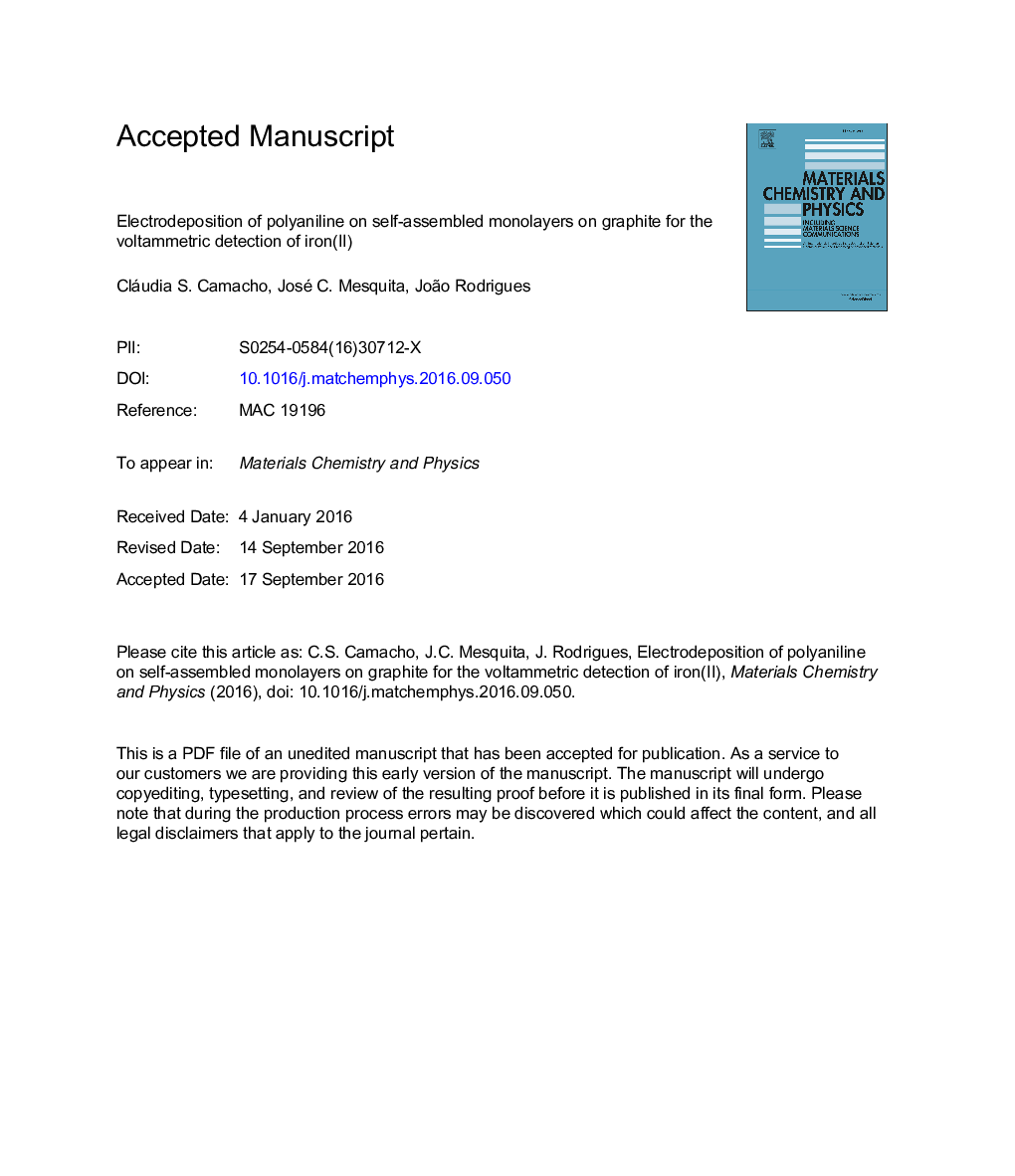| Article ID | Journal | Published Year | Pages | File Type |
|---|---|---|---|---|
| 5448411 | Materials Chemistry and Physics | 2016 | 20 Pages |
Abstract
Conducting polyaniline (PANI) prepared by potentiodynamic electropolymerization on unmodified graphite, and on graphite modified by self-assembled monolayers (SAMs) of 3-mercapto-1-propanesulfonic acid sodium salt (MPS) or 4-aminothiophenol (4-ATP), has been studied by cyclic voltammetry and electrochemical impedance. For the various PANI-modified electrodes, the electropolymerization behaviour of aniline is not significantly different, as well as the polyaniline redox behaviour. Despite that, the films electrodeposited on self-assembled seem to be thinner than those directly obtained on graphite. The 4-aminothiophenol self-assembled exerts more influence on polyaniline, particularly through a relative enhancement of the redox couple benzoquinone/hydroquinone. It was verified by cyclic voltammetry that Fe(II) is detected with the several PANI-modified electrodes. The comparison of the Fe(II) redox voltammetry on the different PANI-modified electrodes shows that does not significantly depend on of the modified electrode used. Complementarily, there is a relative increase in current of the redox couple Fe(II)/Fe(III) on polyaniline compared to that observed in graphite, suggesting an electrocatalytic process. However, that effect may be explained by an increase in surface area. Nevertheless, our results have shown clearly, with polyaniline, an increase in the reversible nature of the voltammetry of the redox couple Fe(II)/Fe(III).
Related Topics
Physical Sciences and Engineering
Materials Science
Electronic, Optical and Magnetic Materials
Authors
Cláudia S. Camacho, José C. Mesquita, João Rodrigues,
